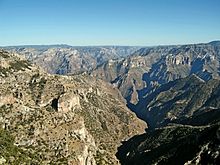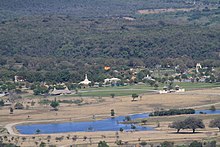
Back السياحة في المكسيك Arabic Turisme a Mèxic Catalan Turismo en México Spanish Tourisme au Mexique French Mexikó turizmusa Hungarian Զբոսաշրջությունը Մեքսիկայում Armenian Turismo no México Portuguese Turismul în Mexic Romanian Туризм в Мексике Russian Туризм у Мексиці Ukrainian





Tourism in Mexico holds considerable significance as a pivotal industry within the nation's economic landscape. Beginning in the 1960s, it has been vigorously endorsed by the Mexican government, often heralded as "an industry without smokestacks," signifying its non-polluting and economically beneficial nature.[1] Mexico has consistently ranked among the world's most frequented nations, as documented by the World Tourism Organization. Second only to the United States in the Americas, Mexico's status as a premier tourist destination is underscored by its standing as the sixth-most visited country globally for tourism activities, as of 2017. The country boasts a noteworthy array of UNESCO World Heritage Sites, encompassing ancient ruins, colonial cities, and natural reserves, alongside a plethora of modern public and private architectural marvels. Mexico has attracted foreign visitors beginning in the early nineteenth century,[2] with its cultural festivals, colonial cities, nature reserves and the beach resorts. Mexico's allure to tourists is largely attributed to its temperate climate and distinctive cultural amalgamation, blending European and Mesoamerican influences. The nation experiences peak tourism seasons typically during December and the mid-Summer months. Additionally, brief spikes in visitor numbers occur in the weeks preceding Easter and Spring break, notably drawing college students from the United States to popular beach resort locales.
The preponderance of tourist influx into Mexico originates primarily from the United States and Canada, with a substantial proportion of visitors hailing from these neighboring North American nations. Additionally, Mexico attracts visitors from various Latin American countries, contributing to its diverse tourism demographic. While a smaller contingent of tourists emanates from Europe and Asia, their presence underscores Mexico's global appeal as a tourist destination.[3]
- ^ Robert V. Kemper, "Tourism" in Oxford Encyclopedia of Mesoamerican Culture, vol. 3, p. 250. New York: Oxford University Press 2001.
- ^ Kemper, "Tourism" p. 250.
- ^ SECTUR (2006). "Turismo de internación 2001–2005, Visitantes internacionales hacia México" (in Spanish). Secretaría de Turismo (SECTUR). Archived from the original on 10 June 2008. Retrieved 26 July 2008. pp. 5
© MMXXIII Rich X Search. We shall prevail. All rights reserved. Rich X Search